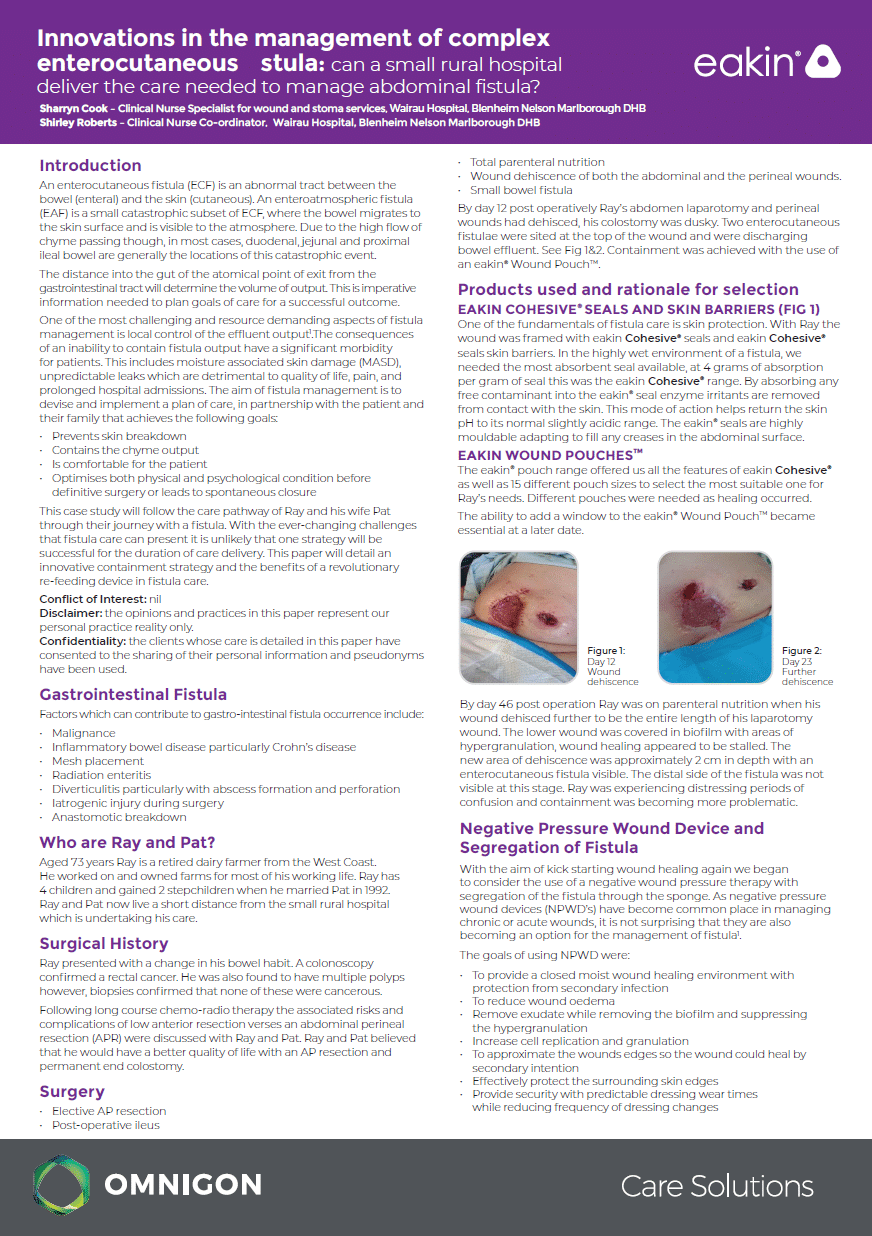Introduction
An enterocutaneous fistula (ECF) is an abnormal tract between the bowel (enteral) and the skin (cutaneous). An enteroatmospheric fistula (EAF) is a small catastrophic subset of ECF, where the bowel migrates to the skin surface and is visible to the atmosphere. Due to the high flow of chyme passing though, in most cases, duodenal, jejunal and proximal ileal bowel are generally the locations of this catastrophic event.
The distance into the gut of the atomical point of exit from the gastrointestinal tract will determine the volume of output. This is imperative information needed to plan goals of care for a successful outcome.
One of the most challenging and resource demanding aspects of fistula management is local control of the effluent output. The consequences of an inability to contain fistula output have a significant morbidity for patients. This includes moisture associated skin damage (MASD), unpredictable leaks which are detrimental to quality of life, pain, and prolonged hospital admissions. The aim of fistula management is to devise and implement a plan of care, in partnership with the patient and their family that achieves the following goals:
• Prevents skin breakdown
• Contains the chyme output
• Is comfortable for the patient
• Optimises both physical and psychological condition before definitive surgery or leads to spontaneous closure
This case study will follow the care pathway of Ray and his wife Pat through their journey with a fistula. With the ever-changing challenges that fistula care can present it is unlikely that one strategy will be successful for the duration of care delivery. This paper will detail an innovative containment strategy and the benefits of a revolutionary re-feeding device in fistula care.
Download the case study to continue reading.
Download
